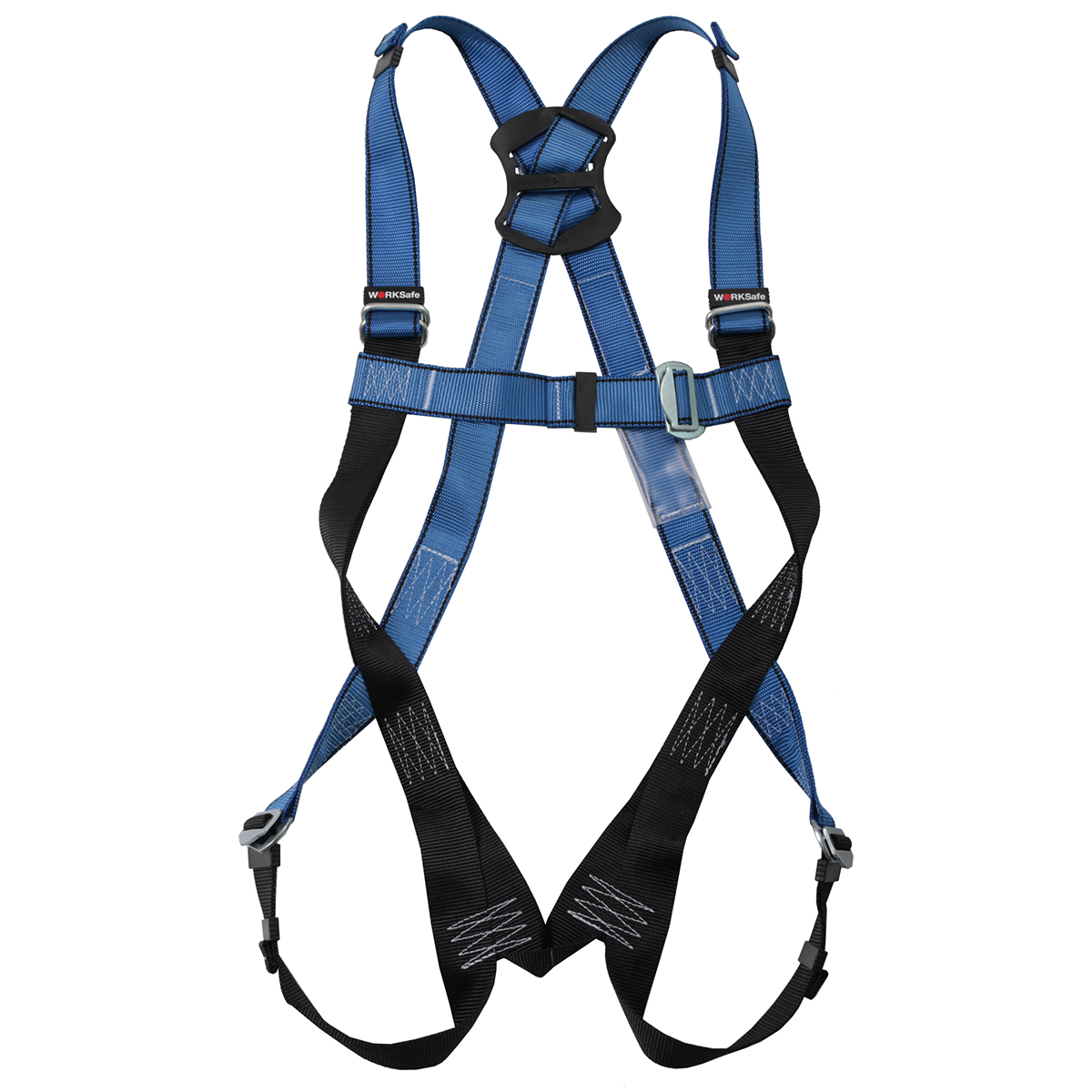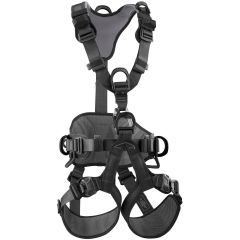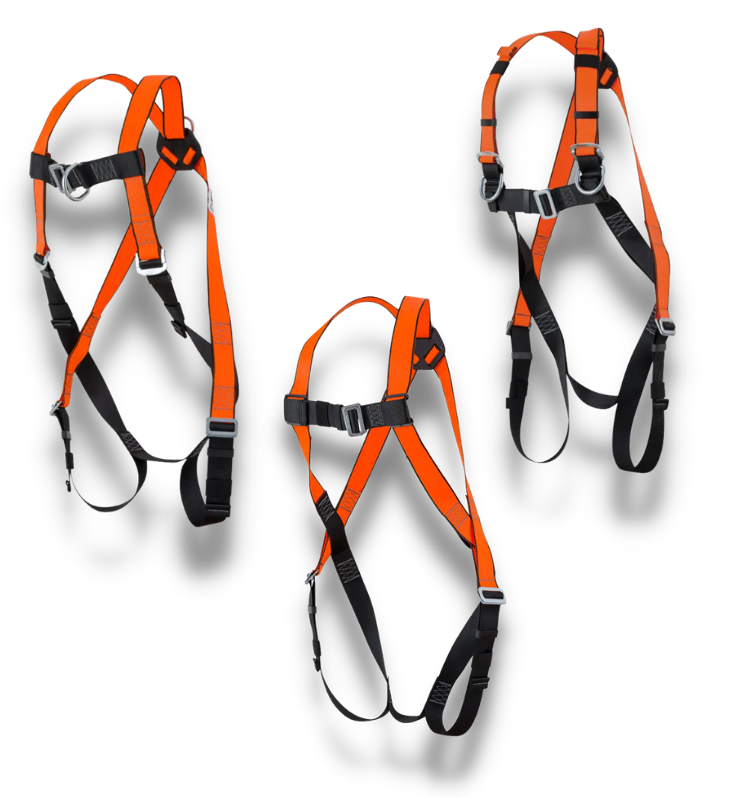Full Body Climbing Harness A Comprehensive Guide to Safety and Comfort
Rock climbing is a thrilling and challenging sport that requires proper safety equipment to ensure a successful and enjoyable experience. One of the most critical pieces of gear for rock climbers is a full body climbing harness. This article will serve as a comprehensive guide to full body climbing harnesses, covering everything from the different types and designs available to tips on proper fit, use, maintenance, and more.
Essential Features to Consider When Selecting a Full Body Climbing Harness

When choosing a full body climbing harness, there are several essential features to consider to ensure your safety and comfort while climbing:
Strength and Durability
- Look for harnesses that are rated for the appropriate weight capacity based on your climbing needs.
- Consider the materials used in the construction of the harness for durability and longevity.
Comfort
- Opt for harnesses with ample padding in the waist belt and leg loops for enhanced comfort during long climbs.
- Adjustable straps and buckles can help customize the fit for maximum comfort.
Gear Loops and Attachment Points
- Check for sufficient gear loops and attachment points to carry essential climbing equipment.
- Make sure the gear loops are sturdy and easy to access while climbing.
Certification
- Choose a full body climbing harness that meets industry safety standards and certifications for peace of mind.
Types of Full Body Climbing Harnesses: From Basic to Advanced

There are various types of full body climbing harnesses available, each designed to cater to different climbing styles and preferences:
Sit Harnesses
- Sit harnesses are ideal for climbers looking for comfort while hanging or resting on the wall.
- These harnesses have a lower attachment point and shorter leg loops for a relaxed sitting position.
Stand-Up Harnesses
- Stand-up harnesses are suitable for climbers who prefer more freedom of movement and support while standing.
- With a higher attachment point and longer leg loops, stand-up harnesses make it easier to transition between standing and climbing positions.
Here is a table comparing the key differences between Sit Harnesses and Stand-Up Harnesses:
| Feature | Sit Harness | Stand-Up Harness |
|---|---|---|
| Attachment Point | Lower | Higher |
| Leg Loop Length | Shorter | Longer |
| Ideal For | Hanging/Resting | Standing/Moving |
Finding the Perfect Fit: How to Choose the Right Size Harness

Proper fit is crucial when selecting a full body climbing harness to ensure your safety and comfort while climbing. Here are some tips on finding the perfect fit:
Waist Measurement
- Measure your waist at the narrowest point to determine the right size harness.
- Ensure the waist belt fits snugly around your waist without being too tight or too loose.
Leg Loop Adjustment
- Adjust the leg loops to ensure they are snug but not constricting.
- Test the range of motion in the leg loops to ensure comfort and flexibility while climbing.
Torso Length
- Consider the torso length of the harness to ensure a proper fit and prevent chafing or discomfort.
- Check that the harness sits securely on your hips without riding up or shifting during climbs.
Proper Harness Wear and Adjustment for Optimal Safety
Wearing and adjusting your full body climbing harness correctly is essential for your safety while climbing. Follow these guidelines for optimal safety:
Putting on the Harness
- Lay the harness flat on the ground and step into the leg loops.
- Pull the waist belt up and fasten the buckles securely.
- Adjust the leg loops and waist belt for a snug and comfortable fit.
- Double-check all buckles and straps to ensure they are properly secured.
Adjusting for Climbing
- Check the fit of the harness before starting your climb.
- Tighten any loose straps to prevent slipping or shifting during climbs.
- Make sure the gear loops and attachment points are easily accessible.
Safety Checks
- Perform a safety check before each climb to ensure the harness is correctly worn and adjusted.
- Inspect the harness for any signs of wear or damage that may affect its performance.
Maintaining Your Full Body Climbing Harness: Tips for Durability and Longevity
Proper maintenance is key to extending the lifespan of your full body climbing harness and ensuring its continued safety and performance. Here are some tips for maintaining your harness:
Cleaning
- Regularly clean your harness with mild soap and water to remove dirt, sweat, and grime.
- Allow the harness to air dry away from direct sunlight or heat sources.
Inspection
- Inspect the harness before each use for any signs of wear, fraying, or damage.
- Check the stitching, buckles, and gear loops for any issues that may compromise safety.
Storage
- Store your harness in a cool, dry place away from moisture and sunlight.
- Avoid storing the harness in extreme temperatures or humid environments.
Industry Standards and Certifications for Full Body Climbing Harnesses
When selecting a full body climbing harness, it is essential to choose a harness that meets industry safety standards and certifications. Look for harnesses that comply with recognized safety standards such as:
- UIAA (International Climbing and Mountaineering Federation)
- CE (Conformité Européenne)
- ANSI (American National Standards Institute)
By choosing a harness that meets these standards, you can ensure that your gear has undergone rigorous testing and inspection for quality and safety.
Benefits of Using a Full Body Climbing Harness
Using a full body climbing harness offers numerous benefits for climbers of all skill levels:
- Enhanced Safety: A full body climbing harness provides additional support and protection in the event of a fall.
- Versatility: Full body harnesses are suitable for a wide range of climbing styles, from indoor gym climbing to outdoor rock climbing.
- Comfort: Properly fitted harnesses with padding offer increased comfort during long climbing sessions.
- Gear Organization: Gear loops and attachment points allow climbers to carry essential equipment conveniently.
Limitations and Considerations When Using a Full Body Climbing Harness
While full body climbing harnesses offer excellent safety and support, there are some limitations and considerations to keep in mind:
- Bulkiness: Full body harnesses can be bulkier and less streamlined than waist-only harnesses, which may restrict movement in certain climbing situations.
- Weight: Some full body harnesses may be heavier than waist-only harnesses, which could affect comfort during long climbs.
- Fit: Finding the right size and fit for a full body harness is crucial for comfort and safety.
Choosing the Right Accessories for Your Full Body Climbing Harness
To enhance your climbing experience and ensure optimal safety, consider investing in the following accessories for your full body climbing harness:
Carabiners
- Choose durable and lightweight carabiners for securing ropes and quickdraws to your harness.
- Look for locking carabiners for added security during climbs.
Belay Devices
- Select belay devices that are compatible with your harness and climbing style.
- Consider auto-locking belay devices for ease of use and added safety.
Climbing Helmet
- Always wear a climbing helmet along with your harness for head protection in case of falls or rockfall.
- Choose a helmet that fits securely and comfortably over your harness straps.
Conclusion
In conclusion, a full body climbing harness is a vital piece of safety equipment for climbers of all levels. By understanding the different types, features, and considerations when selecting a harness, climbers can ensure their safety and comfort while enjoying the thrill of rock climbing. Remember to prioritize proper fit, wear, and maintenance of your harness to maximize its performance and longevity. Stay safe, climb on, and enjoy the adventure with your full body climbing harness!
Ensuring your full body climbing harness fits properly is essential for your safety and comfort while climbing. Remember to measure your waist at the narrowest point to determine the right size harness and adjust the leg loops to ensure they are snug but not constricting. Checking the torso length of the harness is also crucial to prevent any chafing or discomfort during climbs. Make sure the harness sits securely on your hips without any shifting or riding up as you climb.
Proper wear and adjustment of your full body climbing harness play a significant role in ensuring your safety on the rocks. When putting on the harness, step into the leg loops, fasten the waist belt securely, and adjust both the leg loops and waist belt for a snug and comfortable fit. Always double-check all buckles and straps to ensure everything is properly secured before starting your climb. Tighten any loose straps and ensure easy access to gear loops and attachment points for a smooth climbing experience.
Maintaining your full body climbing harness is key to its durability and longevity. Regularly clean your harness with mild soap and water to remove dirt and grime, then air dry it away from direct sunlight or heat sources. Before each use, inspect the harness for any signs of wear, fraying, or damage that could compromise its safety. Store your harness in a cool, dry place away from moisture and sunlight to keep it in top condition for your next climbing adventure.
When choosing a full body climbing harness, always look for industry standards and certifications like UIAA, CE, and ANSI to ensure your gear meets strict safety requirements. These certifications guarantee that your harness has undergone rigorous testing and inspection for quality and performance. By selecting a certified harness, you can climb with confidence knowing that your gear has met the highest safety standards in the industry.
Using a full body climbing harness offers numerous benefits, including enhanced safety, versatility for different climbing styles, increased comfort with padding, and convenient gear organization with built-in loops and attachment points. While there are some limitations to consider, such as bulkiness and weight compared to waist-only harnesses, the benefits of using a full body harness far outweigh the drawbacks.
To enhance your climbing experience further, consider investing in accessories like durable carabiners, compatible belay devices, and a climbing helmet for added protection. Always prioritize safety and comfort when choosing accessories for your full body climbing harness to ensure a seamless and secure climbing experience.
In conclusion, a full body climbing harness is a must-have piece of equipment for climbers looking to stay safe and comfortable on their climbing adventures. By understanding how to select, wear, adjust, and maintain your harness correctly, you can enjoy the thrill of climbing while prioritizing your safety. So, gear up, stay safe, and conquer those cliffs with your full body climbing harness!



